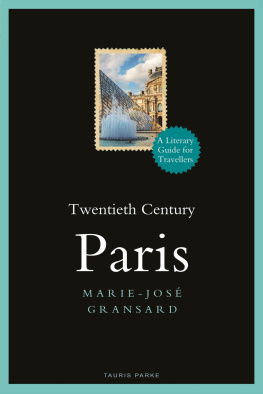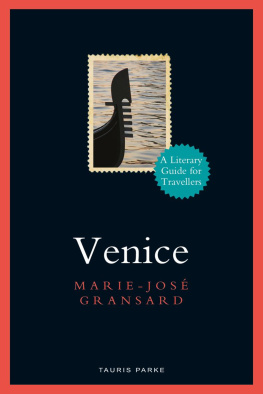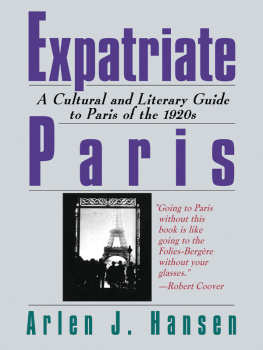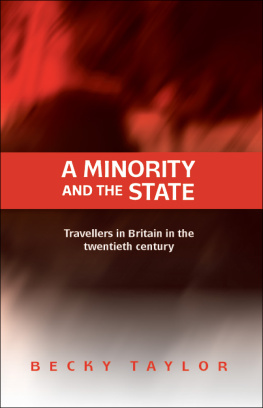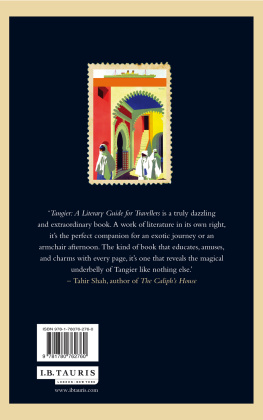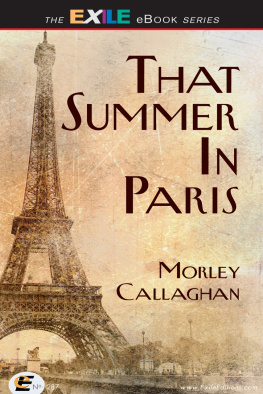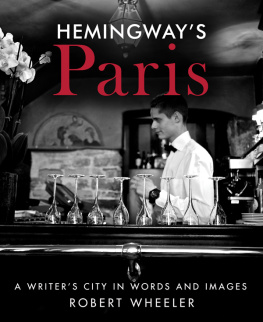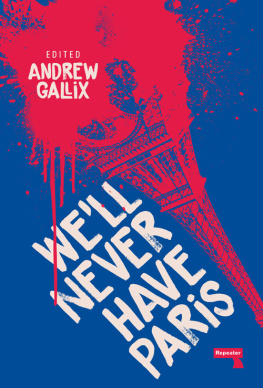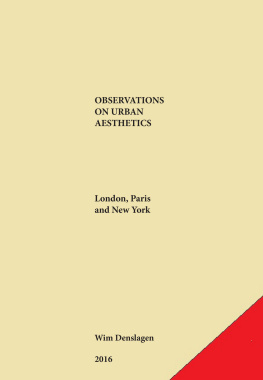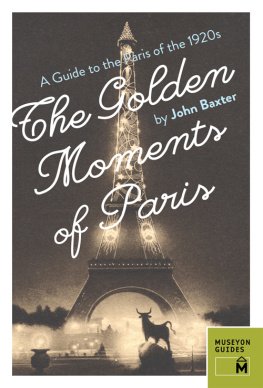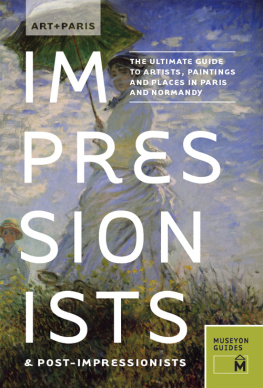
For Noam, Theo and Sascha

Contents
The challenge of writing a literary guide to Paris has been simplified a little by limiting myself to the very specific but rich period from 1900 to 1950. My research has been carried out mainly in the British Library in London, in Paris, and also at the Marciana Library in Venice. I am grateful to Eric Hazan, who knows Paris comme sa poche , for some of my initial ideas, and for his views on the changing city he knows so well and cares about so greatly. Towards the end of her life Mary Keen (Blumenau) shared personal memories of James Baldwin, whom she had known in Paris in the 1950s, and gave me a number of useful books. Her encouragement made the project a reality. John Venning guided me through an intensive and illuminating reading of T. S. Eliots The Waste Land . I benefited from discussions with Michael Clarke on Modernism, and consulted David Budgen on the Russian entries. My son Sebastian Budgen has again encouraged me and given me valuable professional advice. Most of the photographs were taken by my grandson Noam, and by Jean-Jacques Gransard, and I am grateful to Martin Kamer for allowing me to use some from his collection. Jack Holmes drew the map of the Paris arrondissements. Above all I would like to thank Jenifer Ball, who has once more stood by from the start to suggest, translate and correct, and without whom this book could not have been written.
The Eiffel Tower: symbol of the Belle poque |
Les annes folles |
Of course Lorelei stayed at the Ritz |
Thtre des Champs-lyses, where Josephine Baker created a stir |
La Rotonde in Montparnasse, favourite haunt of Kiki |
Modigliani and Akhmatova walked and talked in the Jardin du Luxembourg |
46 rue Gassendi, where the young Trotsky lived for a while |
Fouquets, James Joyces favourite restaurant |
The simple tomb of Samuel Beckett in Montparnasse Cemetery |
13 rue des Beaux-Arts, Wildes Htel dAlsace |
Notre-Dame, the monument which has inspired masterpieces |
Richard Wright lived at 14 rue Monsieur le Prince |
Baldwin did much of his writing in Le Flore |
The modern flapper |
Natalie Barneys salon was at 20 rue Jacob |
Caf de la Mairie appears in Djuna Barness Nightwood |
15 rue Gungaud, one of Nancy Cunards homes |
Hope Mirrleess poem Paris is set in the Mtro |
Sylvia Beachs bookshop Shakespeare and Company was at 12 rue de lOdon |
Adrienne Monniers bookshop was at 7 rue de lOdon |
Hemingways studio at 39 rue Descartes |
The Dingo Bar (now Auberge de Venise), where Hemingway and Fitzgerald met |
Hemingway is commemorated at 74 rue du Cardinal Lemoine |
14 rue de Tilsitt, occupied by Scott and Zelda Fitzgerald |
Ford Madox Ford lived at Cit fleurie in boulevard Arago |
DAnnunzio stayed at the luxurious Htel Meurice |
Isadora Duncan, photographed by Otto |
The Thtre du Chtelet saw many Ballets Russes performances |
Goncharova and Larionov lived and worked above La Palette |
27 rue de Fleurus, where Gertrude Stein held her salon |
Notre-Dame, damaged by fire in April 2019 |
The present Shakespeare and Company bookshop |
Paris has always acted as a magnet for artists and writers from outside France, particularly during the period covered by this literary guide, 1900 to 1950, marked by so many avant-garde movements and so much political and social change. The guide looks at some of those who came to Paris, seeking freedom from oppression or the freedom to live their lives without constraint, as well as at tourists and travellers of all kinds. It explores where they lived, what they wrote, what was written about them and whom they met. They are introduced through their literary legacy in diaries, memoirs, autobiographies, letters, poetry, theatre and fiction.
I chose to include also French writers and artists connected with them sentimentally or professionally. The creative community in Paris embraced all artistic and literary forms from fashion, photography, choreography, music, painting and sculpture to writing. The art dealer Daniel H. Kahnweiler stressed that painters during the first half of the twentieth century, particularly Cubists, were also writers: They came to discover that painting was in fact a form of writing. Gertrude Stein considered her writing a literary form of Cubist painting. I include the familiar figures who dominated the period, but my selection also introduces lesser-known figures who have been unfairly ignored or forgotten, including many women.
Names in bold in the text indicate those who have left a written record. Visitors to Paris will have access to a city plan or a digital street map, so I have included an overview of the arrondissements for orientation. Artists and writers lived and socialised mainly in two locations, Montmartre (18) up to 1910, attractive for its cheapness and village atmosphere (and where Picasso settled when he arrived in Paris in 1904, following in the footsteps of painters like Renoir), and then the Left Bank, which by 1910 had superseded Montmartre, with the Latin Quarter (6) and Montparnasse (14) described by the writer Jean Giraudoux as the centre of the world. I have included a reference list with addresses of locations mentioned in the text, as well as a short glossary, a chronology of key cultural and historical events dominating the period, and suggested reading for those who wish to explore further.

Paris was a free city, an open city. The entire revolution in art happened at that time.
(Jean Cocteau)
By 1900 the Belle poque was at its height. The city of Paris had been transformed by major projects like Haussmanns controversial Grands Boulevards. The Eiffel Tower had been constructed on the Champ-de-Mars for the Exposition universelle of 1889, which was the start of an exciting period, seeing the birth of art forms like cinema and photography. The Exposition universelle of 1900 in which countries from all around the world participated was visited by millions. There were wonderful waterworks which created a fairy-tale atmosphere by the river at night. Never had Paris looked so good. Further major exhibitions followed over the next decades. The 1925 Exposition des arts dcoratifs et industriels modernes was exceptional, and gave its name to Art Dco , a modern style influenced by, amongst others, Africa, jazz and Josephine Baker. Then in 1931 came the Exposition coloniale , with thirty million visitors, and at the Trocadro Palace in 1937 the Exposition internationale des arts et techniques appliqus la vie moderne .
The French capital, which was by 1900 the centre of international culture, was a magnet for artists, enrolling to study painting at Acadmie Julian, or sculpture at the studios of Bourdelle and Rodin. For Picassos compatriot Joan Mir: My formation was in Paris.

